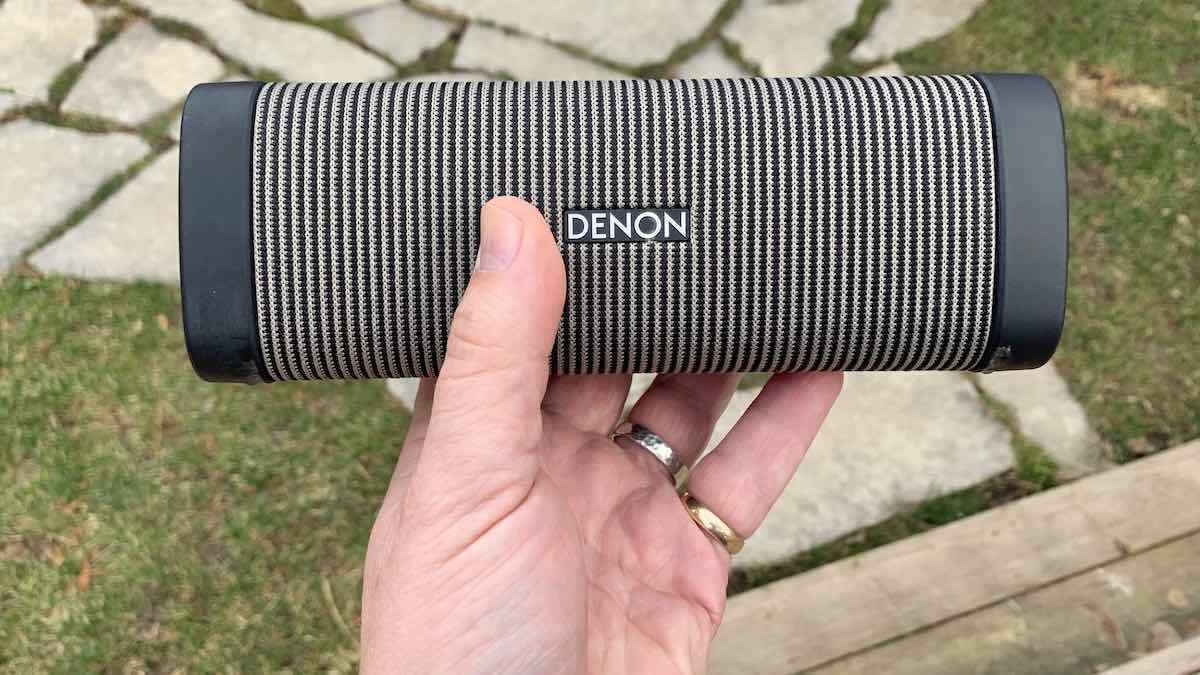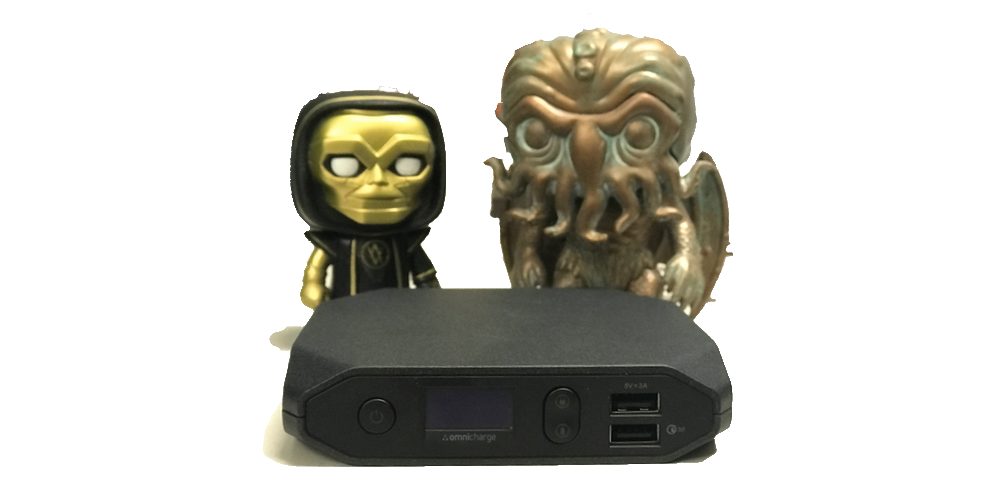
Sometime after we moved into our first house, I decided that I wanted to be able to connect my laptop to the internet from any room in the house. So one Saturday, a friend of mine and I spent the day punching holes in walls and pulling wires to add ethernet jacks to each room. Oh, the good old days.
Today, of course, such an undertaking is silly. I don’t even remember the last time I plugged an ethernet cable into my laptop. Also, back in those days, I could count the number of devices that needed an internet connection on one hand. Or really, one finger. Today, there are literally dozens of devices in the house that are constantly connected to our home WiFi.
But as great as it is to not have to think about plugging something in to get in online, WiFi of course has its problems, and in bigger houses like ours, the main problem is that the signal isn’t necessary so great in the far reaches of the house. The big problem area for us is our daughter’s room, which is in the front of the house and far away from the router, which sits next to the TV in the living room, essentially (but not intentionally) as far from her room as it can be.
Over the years, we’ve tried various solutions, and all have had good and bad elements. So, I was excited when I had the chance to check out Milo WiFi.
The Milo WiFi system comes in two configurations: a $129 two-pack and a $199 three-pack. I was sent a three-pack to test out at home.
The system is incredibly easy to set up. You simply take the base unit and plug it in somewhere within 40 feet of your home’s WiFi router.(The base unit is identical to the other units, except that it has an ethernet port in case you want or need to hardwire it to the router.) Then, download and install the Milo app on your phone and follow a series of simple prompts to add the base unit to your existing WiFi.

Next, take the second unit and place it somewhere within 40 feet of the base unit, plug it in, and again use the app to add it to your network. If you have the three pack, repeat those steps with the third unit.
At my house, I put the base unit in the main family room, which allowed it to connect to the router without any walls in the way. The second unit was placed on a curio cabinet at the top of the stairs, within sight of the base unit, while the third one I put directly in my daughter’s room.
And it worked as advertised: my daughter immediately saw improved WiFi connectivity and speed in her room. Best of all, it was entirely seamless from her point of view: she didn’t have to go into her phone’s settings and connect to some new network. It just worked.
Well, sort of, because there was also a problem. When I got home from work the night after I installed the Milo system, both kids reported that the Google Home Minis were no longer broadcasting to each other. And, worse yet, there was a minor crisis because my daughter had a report she had written on her Chromebook and needed to print, but the Chromebook was no longer connecting to the printer.
Before I explain exactly what was happening, I need to briefly outline my home network today. As I mentioned before, there are now dozens of devices on it. On any given day, there are the normal assortment of things we think of as needing to be on the internet: the desktop PC, my laptop, both kids’ Chromebooks, and all four of our smartphones. There’s also the Xbox and our Dish Hopper DVR and both of the Samsung Smart TVs. But if that was it, the Milo system would have worked fine, and actually made things better for us, since a lot of those devices frequently hang out in places that our router struggles to get signals to.
It’s the other set of devices that screw things up. We have a Google Home in the kitchen, and Google Home Minis in each of the bedrooms upstairs. We have a host of other smart devices: a Nest thermostat, a set of Lutron Caseta lamp dimmers, and the Bond ceiling fan remote. Those are just the start: I’m planning to continue adding smart devices to the house for the foreseeable future. Oh, and then there’s the dumb but all-important printer.
The reason all of those other devices cause problems is because they don’t just need to connect to the internet. They need to connect to each other. And to do that, they need to be on the same network. I don’t want to get too technical here, but the way the Milo works is that it essentially creates a network within your existing network. That’s why the setup is so simple: by piggy-backing this new network on your existing home network, all of the devices think they’re still connecting as they were before. And the system is designed to detect the available signals and put devices on the best network, which means that sometimes one of the Google Minis would connect to the main router, and other times they’d connect to one of the Milos.
I realized pretty quickly what was going on and reached out to Milo for help. The customer service rep I chatted online with was extremely helpful, and the company definitely deserves kudos for that. She didn’t give me any of the normal “turn it off and turn it back on” stuff. Instead, it was clear she was really reading my questions and giving me meaningful answers. At one point, she even asked me to wait a few minutes while she went and consulted with others about the problem. But, despite the attempt, the answer in the end was that this was essentially an unavoidable fact of life.
After that, I contacted the PR rep who had sent me the units, and he in turn passed my questions on to the company, where they ended up all the way in the inbox of John Stuckey, Milo Wifi’s CEO. I’m going to just directly quote his answer:
Milo will definitely get you wifi where you didn’t have it before and lets you connect to the internet with ease. Wifi-connected products such as tablets, streaming TV’s, thermostats, cameras, and smart doorbells can now be easily added to your home without issue. Alexa and Google Home assistants can be added as standalone products. If you are trying to use multiple home assistants as an intercom system then there are challenges with having these systems on two different wifi networks in your home. So it’s best to have all of these device either on the Milo network or your existing router network. There could be some challenges with certain products like wireless printers and speakers that are connected to your existing router network. The work around is to switch over to the same network that these devices are connected to when using them. For example, if the wireless printer is connected to the existing router’s wifi then you need to be connected to the existing router’s wifi to print to the printer. Almost all systems like Milo perform in this way. Our goal was to provide an inexpensive, easy-to-use solution to spread your wifi signal into areas where you didn’t have reliable Wifi before. We’re also always looking at ways to improve Milo and make it the best solution in the market for customer satisfaction.
Basically, he’s saying the same thing his customer service rep said: the way that WiFi extenders work is to add a new network in the home, which unfortunately means that complex networks like mine, where devices need to talk to each other, aren’t going to be easily compatible with it. He does provide the possible work-around of manually switching networks when you need devices to talk, or forcing devices like the Minis to just stay on one network. But at the point, you’re constantly having to think about networking, and that’s not really something I want to do. And it’s most definitely not something that I could get my decidedly non-technical wife and daughter to do.
The Verdict
The Milo Wifi system absolutely works as advertised, and would be a great solution for homes that have devices that need to access the internet but also are large enough or have enough walls where getting a consistent WiFi signal is sometimes a challenge.
However, if your home also has devices that need to connect to each other, whether for good old fashioned file sharing, streaming media, printing, or connecting smart things so that you can yell at your house to do things for you, then it will only work if you’re willing to jump through some extra hoops now and then to keep things on the same network. That really isn’t a viable solution at my house, where given the choice between slower internet in her room and having to have me teach her about networking, my daughter will most definitely accept slower speeds. But there are likely plenty of households where that’s a perfectly acceptable trade-off, in which case, again, Milo is a great solution.
The Milo two-pack is available at Amazon and other retailers for $129, and the three-pack for $199.
Note: I was provided with a Milo three-pack for review purposes, but all opinions are my own.




Wouldn’t the simple solution be to just plug the base into the router and shut off the routers wifi?
I also would like to know if there are any parental controls integrated in to this?? If my son’s playstation 4 ip address is know as well as his phone, can i control when access is allowed? Stuff like that would be interesting to know as well as I am considering this over other mesh options.